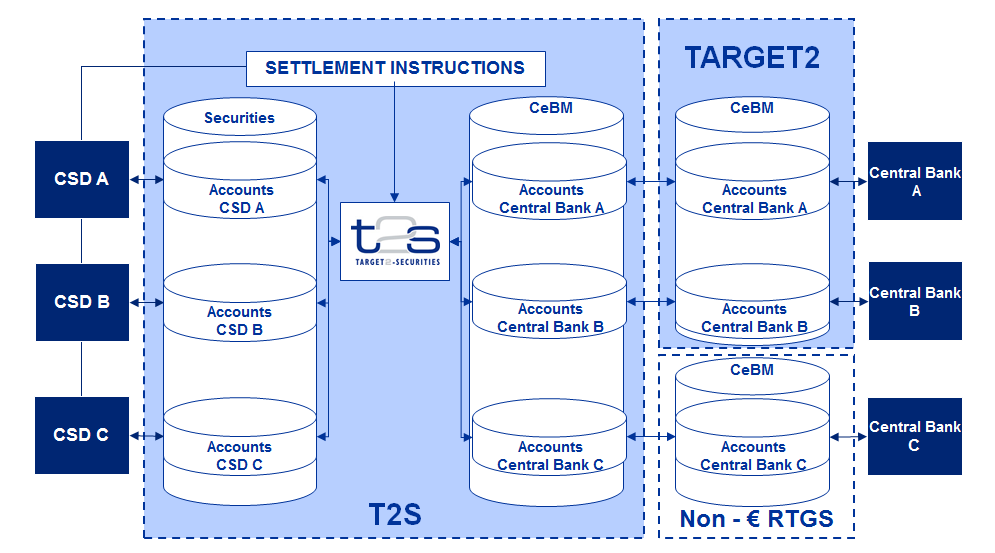TARGET2 participation
T2, one of the TARGET Services, has now replaced TARGET2 as the Eurosystem’s real-time gross settlement (RTGS) system. This change will be soon reflected on our website.
The following documents and guides provide an overview of the various actions that should be carried out by any new TARGET2 participant ahead of its connection to the single shared platform (SSP). The central bank of the new participant is responsible for providing guidance and support throughout the whole connection process.
Internet-based participation
Routing and mapping of payments
Routing/Mapping of Payments and Ancillary System TransactionsFor transparency purposes, the Eurosystem provides a list of all direct and indirect TARGET2 participants.
Disclaimer
The list of TARGET2 participants available on this page includes only direct and indirect participants; multi-addressee and addressable BICs are not included. The list provides the participants’ BIC, name as recorded in TARGET2, and type of participation. It is created based on the TARGET2 Directory valid on the first day of the current quarter. Users should note that it is indicative and changes may have been made subsequently. The list of TARGET2 participants is for information purposes only.
In order to best meet the needs of banks, ancillary systems and central banks, the Eurosystem chose a migration approach to TARGET2 which allowed for flexibility in the timing of the connection to the Single Shared Platform (SSP). Accordingly, national migration profiles were drawn up indicating the situation on the first day of the central banks’ migration to the SSP. These migration profiles provide an overview of the usage of the different modules (including the optional modules) of TARGET2, information regarding the types of transactions which settle in each module and information on the ancillary systems.
Some banking communities chose a phased approach to migrate to the SSP, other chose a national big bang:
- Phased approach: Some parts of the existing infrastructure co-existed with the SSP for a period of time, in order to allow for a smoother migration. Some RTGS transactions were settled in the SSP from day one, while the rest of the business will continue to be settled on proprietary home accounts for an interim period lasting a maximum of four years (the “transition period”). These countries chose the phased approach: Austria, Belgium, Germany, Lithuania, Malta, Poland, Portugal and Spain.
- National big bang: All existing systems were dismantled from the moment the central bank migrated to the TARGET2 single shared platform (SSP). All payment transactions were settled in the SSP from the first day. These countries opted for the national big bang: Cyprus, Denmark, Estonia, Finland, France, Greece, Italy, Ireland, Latvia, Luxembourg, the Netherlands and Slovenia. The ECB also chose this model for the AS which connect through the ECB to TARGET2.
Compilation table:
This table gives an overview of all countries participating and connected to TARGET2 and the ancillary systems active in those countries settling in the SSP.
Ancillary system overview tableDedicated cash accounts (DCAs) are used to settle the cash leg of securities transactions in T2S, while they legally belong to TARGET2.

How to open a DCA?
Subject to the fulfilment of the relevant eligibility criteria, a payment bank may open a dedicated cash account (DCA) in euro with any of the central banks participating in TARGET2. More details here:
Who can make use of auto-collateralisation?
If a payment bank wants access to central bank auto-collateralisation, it needs to hold both a DCA and an RTGS account with access to intraday credit with the same central bank.


